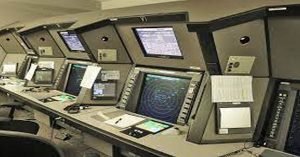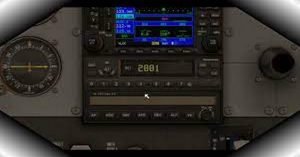The word “avionics” is a portmanteau of “aviation” and “electronics,” and it encompasses the electronic systems used on aircraft, satellites, and spacecraft. These systems play a critical role in both modern civilian and military aviation, ensuring safe, efficient, and effective operations across a variety of flight conditions.
In this comprehensive article, we will delve into the intricacies of avionics systems, exploring their evolution, the different types of systems, and the breakthroughs that have made modern flight a marvel of human engineering.
What are Avionics Systems?

1. Historical Overview
The history of avionics can be traced back to the early days of aviation when pilots relied on rudimentary instruments like airspeed indicators and magnetic compasses. The real transformation began during World War II, when rapid advancements were made in electronics, radar, and communication systems. These developments provided military pilots with enhanced navigation, targeting, and communication capabilities, making aircraft more versatile and deadly.
Post-war, these technological advancements were repurposed and refined for civilian aviation, leading to safer and more efficient air travel. The jet age, which began in the 1950s, witnessed a surge in the development of avionics as commercial aviation expanded and the need for more advanced navigation and control systems grew.

2. Core Components of Avionics Systems
2.1. Communication Systems
Modern aircraft rely on a range of communication systems:
- VHF (Very High Frequency) Communication: This is the primary communication channel for air traffic control and can be used for pilot-to-pilot communication.
- HF (High Frequency) Communication: Often used for long-distance communication, especially over oceans where VHF signals can’t reach.
- Satellite Communication (SATCOM): Provides global coverage and is essential for long-haul flights.
2.2. Navigation Systems
Avionics navigation systems have undergone tremendous evolution. Some of the key navigation systems include:
- Inertial Navigation System (INS): Uses gyroscopes and accelerometers to calculate the aircraft’s position and velocity without external references.
- Global Navigation Satellite System (GNSS): Uses signals from satellites, like the Global Positioning System (GPS), to determine aircraft position.
- Radio Navigation: This includes systems like VOR (VHF Omnidirectional Range) and DME (Distance Measuring Equipment), which use ground-based transmitters.
2.3. Surveillance Systems
Surveillance in aviation refers to systems that enhance situational awareness:
- Radar: Detects and locates other aircraft and obstacles.
- TCAS (Traffic Collision Avoidance System): Monitors the airspace around an aircraft for other aircraft equipped with transponders and provides avoidance instructions if the risk of collision arises.
- Weather Radar: Helps pilots detect and avoid severe weather conditions.
2.4. Flight Control Systems
These are systems that assist pilots in controlling the aircraft:
- Autopilot: Helps maintain the aircraft’s course, altitude, and speed.
- Fly-by-wire: Replaces conventional manual flight controls with an electronic interface.
- Flight Management Systems (FMS): An onboard computer system that automates a variety of in-flight tasks, including navigation and engine control.

3. Modern Developments in Avionics
3.1. Integrated Modular Avionics (IMA)
Traditionally, each avionic system had its own dedicated hardware. IMA represents a shift towards a more integrated approach, where multiple avionic functions can run on shared hardware platforms. This reduces weight, increases efficiency, and simplifies maintenance.
3.2. Glass Cockpit
The traditional cockpit with its myriad of analog instruments has been replaced in most modern aircraft by the “glass cockpit” – a setup where primary flight information is displayed on large, customizable digital screens.
3.3. Data Networks in Aviation
Modern avionics are increasingly connected. Aircraft are now equipped with data buses that allow different systems to communicate with each other and with ground stations. This has given rise to the concept of the “connected aircraft,” where real-time data can be shared with ground-based systems for maintenance, traffic management, and other purposes.

4. Challenges and the Future
As avionics systems become more sophisticated and interconnected, they also become more vulnerable to potential threats:
- Cybersecurity: The connected nature of modern aircraft raises concerns about potential cyber-attacks. Ensuring robust cybersecurity is becoming paramount in avionics design.
- Software Complexity: As avionic systems rely more on software, ensuring that this software is error-free and reliable is a significant challenge.
- Integration with Air Traffic Management: As airspace becomes busier, integrating avionic systems with emerging air traffic management systems will be crucial.
The future of avionics is bound to witness even more rapid advancements with the introduction of artificial intelligence, quantum computing, and more sophisticated sensors. As the aviation industry pushes boundaries, whether it’s through supersonic commercial travel, drones, or space exploration, avionics will undoubtedly play a pivotal role in shaping that future.

Conclusion
Avionics systems are the lifeline of modern aviation. From the rudimentary instruments of early aircraft to the sophisticated, interconnected systems of today, avionics have continually evolved to meet the demands of an ever-growing and complex aviation landscape. As we look to the skies and beyond, the importance of these systems will only grow, ensuring safe, efficient, and advanced flight for generations to come.
